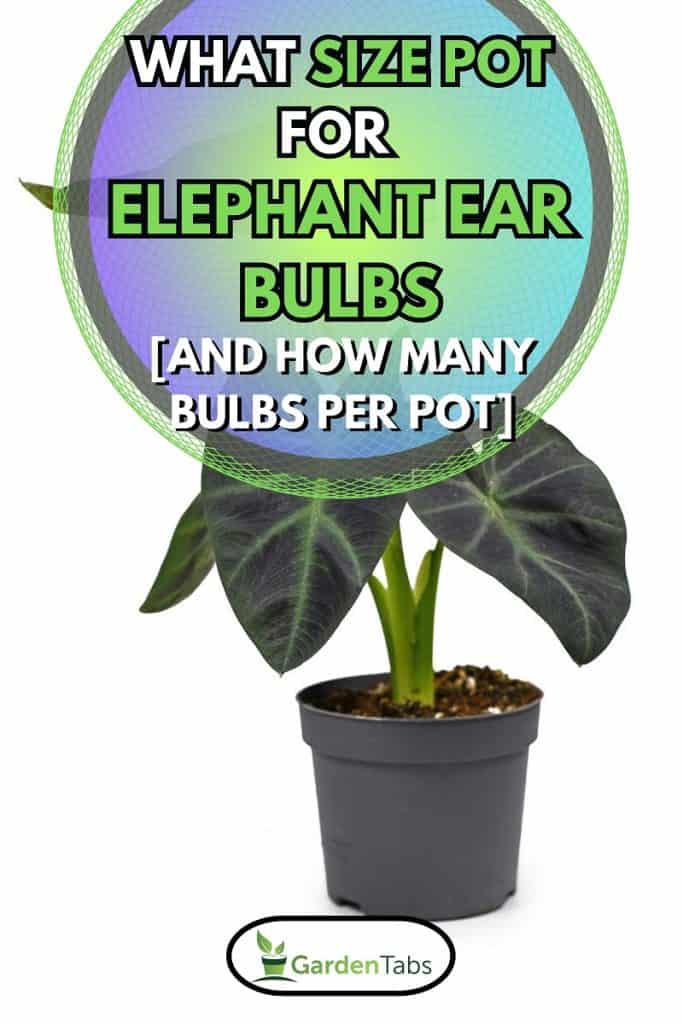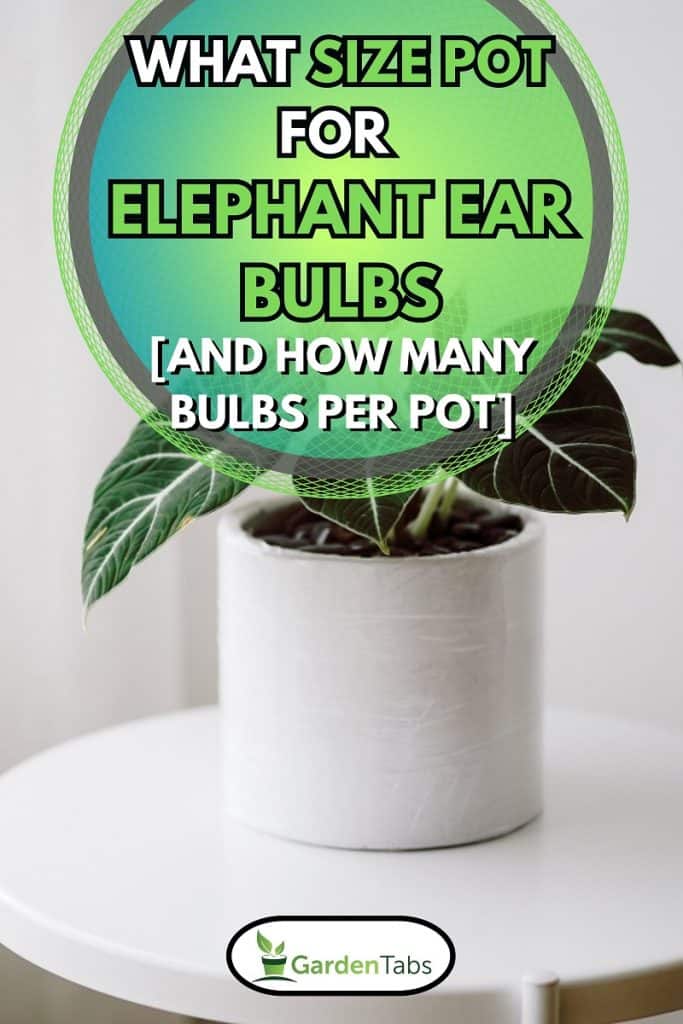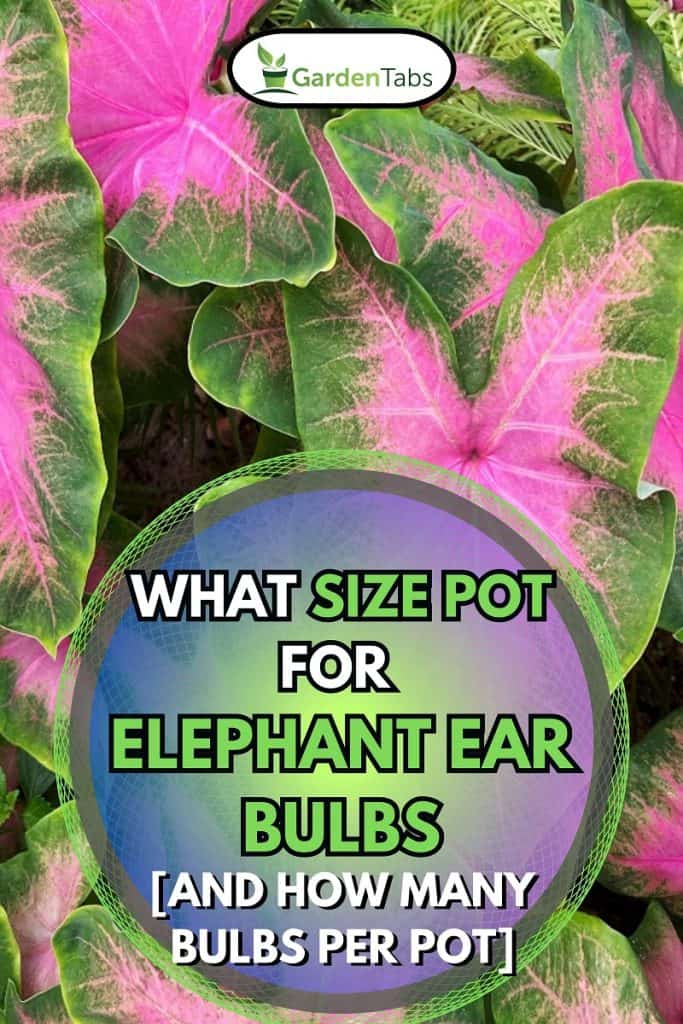Have you ever wanted to plant elephant ears but worried about not having space for them to grow? Don't worry—you can easily grow these plants in a pot of the right size. In this post, we have done the research on the best pot size for elephant ears and how to grow them!
Elephant ears can come in two varieties: Alocasia and Colocasia. Each has different minimum pot size requirements. Colocasia needs a pot that is at minimum 18 inches wide and 16 inches deep. Alocasia needs a pot twice as wide, at 36 inches wide and 16 inches deep.
You can only plant one bulb per pot. A single bulb will grow multiple sprouts at a time within three to eight weeks. The size of your pot will also affect how big the elephant ears will get.
Now that you know how big your pot needs to be, you can move on to learning how to cultivate your elephant ears. You might also be wondering how to differentiate between the two varieties, or how to grow more than one bulb. We will answer these questions in this post, so read on!
![Colorful exotic Caladium plants in flower pots inside urban jungle living room, What Size Pot For Elephant Ear Bulbs [And How Many Bulbs Per Pot]?](https://gardentabs.com/wp-content/uploads/2022/09/Colorful-exotic-Caladium-plants-in-flower-pots-inside-urban-jungle-living-room-What-Size-Pot-For-Elephant-Ear-Bulbs-And-How-Many-Bulbs-Per.jpg)
What Is The Difference Between Alocasia and Colocasia?
Though they are mostly similar, you can quickly tell the difference between the Alocasia and Colocasia variety of elephant ears based on how the leaves grow.
Alocasia leaves tend to be more elongated and point upwards. On the other hand, Colocasia leaves droop and point downwards. Also, Alocasia can be toxic to dogs and humans, so keep this in mind if you are keeping this variety indoors.
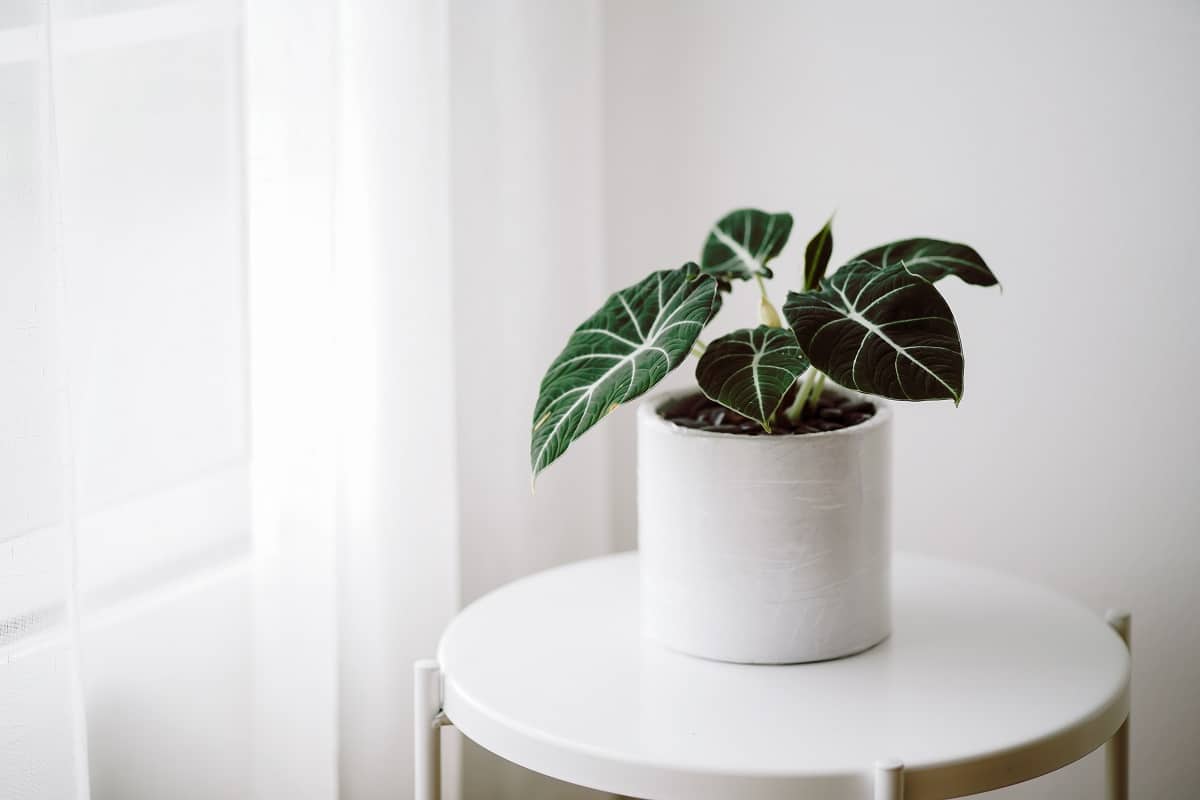
Colocasia tubers are edible. These are also called taro. Try not to get the two varieties mixed up, since one is edible and the other is not. As a rule, it is safer to not try and eat your decorative plants!

Do Elephant Ears Like To Be Pot Bound?

Elephant ears have no problem with being pot-bound. But, as we mentioned above, the size of the pot will affect how big the plant will get. At their tallest, elephant ears can grow up to 10 feet with a spread of 10 feet. Its leaves can grow to a size of three feet by two feet in tropical conditions.
Your elephant ears may also grow to be smaller if you are in a colder climate. We will go over how to grow this plant in different hardiness zones and what to expect from in the next sections.
The minimum depth of your pot should be 16 inches, since you will want to plant the bulb at five inches deep. This will allow enough room for growth and moisture.
If you want to grow more bulbs at a time, it will be difficult to do in a pot. The standard distance between elephant ear bulbs is two to four feet.
![Colorful exotic Caladium plants in flower pots inside urban jungle living room, What Size Pot For Elephant Ear Bulbs [And How Many Bulbs Per Pot]](https://gardentabs.com/wp-content/uploads/2022/09/what-size-pot.jpg)
You can adjust the size of your pot to the size of the bulb. If you are working with larger bulbs, you need a larger pot. Either way, growing elephant ears in pots is a common way to propagate them, as they are bound to sprout in the right conditions.
Click here to see this resin planter on Amazon.
Growing Elephant Ears In Pots
Since you are planting your elephant ears in a pot, you can grow them either indoors or outdoors. This type of plant is native to more tropical regions of Southeast Asia, so they need a lot of warmth and sunlight. Wherever you decide to grow your plants, ensure there is ample light.
Elephant ears need a lot of nourishment from sunlight, water, and plant food. Position your pots in an area with a lot of indirect sunlight, since full sunlight can hurt the plant.
You can get away with fuller sunlight in cooler climates. Just make sure your plants are well-watered and the soil is always moist. Dryness is harmful to elephant ears since they like to grow in more humid areas.
Water your plants daily. Some people choose to submerge the pots during the summer since elephant ears need two to three inches of water a week. You can help keep the potting soil moist with mulch, especially after you first plant an elephant ear bulb.
Click here to see these elephant ear (Colocasia) bulbs on Amazon.
Ideal Zones For Growing Elephant Ears
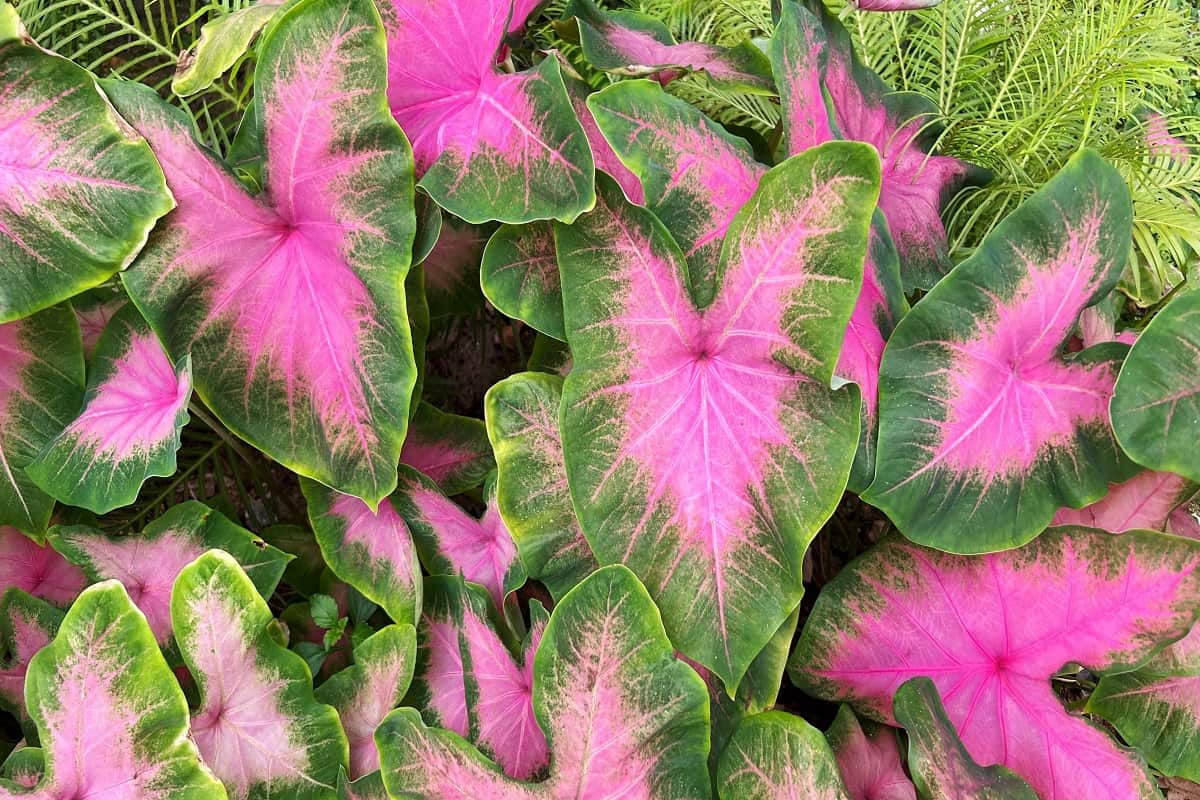
If you have any experience with cultivating plants, you know that the U.S. is divided into different zones for growing. This is mapped out in the USDA plant hardiness map. The 11 zones are typed by the minimum average annual temperature.
Elephant ears may struggle to flourish in zones 1 through 6. However, growing them in these zones is not impossible. You can grow them as a seasonal plant in zones 3 to 8. You will have to overwinter elephant ears during the colder months to keep them from dying.
Hardiness zones 9 to 11 are the most ideal for growing elephant ears. These plants can grow year round as long as you take good care of them in these zones.
Soil For Elephant Ears In Pots
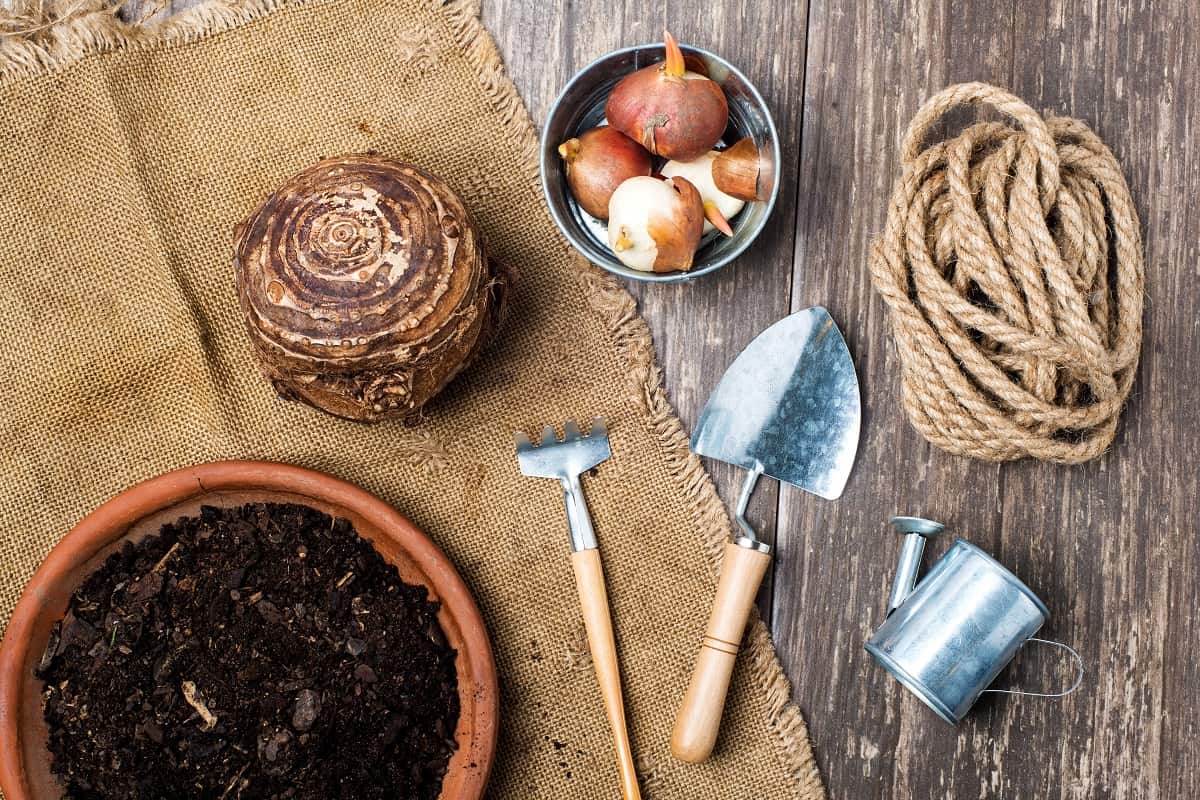
With all the water your elephant ears need, you should choose well-draining, nutrient-rich soil. Use soil that is a little more acidic. You can use fertilizers or manure to achieve this.
Most of the time, you can grow your elephant ears in a standard organic potting mix. This plant needs a lot of organic matter to thrive, so you can come up with your own mixture to maximize how many nutrients you want to pack in it.
If you choose to grow your plants next to or in a body of water, ensure that there is a constant flow of fresh water. Boggy or stagnant water will harm your plant's growth. Make sure to put enough draining holes at the bottom of your plant pot.
Elephant Ears In Pots In Winter

If you live in a zone that experiences cold or snowy winters, start digging out your elephant ears once it begins to get cold. This is usually around the time when summer ends, and you notice the leaves drying up.
Some advise waiting until after the first frost, but take care, as your tubers could die if they get too cold.
Here is an overview of how to overwinter potted elephant ears:
- Cut the stems of your elephant ears to around one to six inches
- Dig out the bulb (tuber)
- Dry out the tuber for up to three weeks
- Wrap the bulb in a plastic bag, old newspaper, or similar material
- Cover the wrapped-up bulb in peat moss or similar
- Store in a warm, dry area until the frost ends
Check on your overwintering tubers every once in a while. Make sure they do not get too dry. On the other hand, make sure that they do not grow any fungus or mold. You can repot the elephant ear tubers in the spring, once the cold weather has passed.
When Should I Plant Elephant Ears?
Depending on your zone, the month or season of the year will affect elephant ear growth. For zones 9 to 11, you can plant the bulbs at virtually any time of the year, and they should sprout just fine. You can expect growth within just three weeks as long as you give the plant enough nutrients.
For colder zones, do not plant elephant ears too close to winter. The summer months may still be a little too late or dry, so spring is the way to go. While elephant ears will grow within three weeks at the least, do not be discouraged if they take longer.
Elephant ears can take up to two months to grow from planting. So growing them later in the year could have you overwintering them before they are even able to grow leaves. Choosing a warm, early month just after the cold season will ensure that your plant has enough growing time.
Try to avoid harsh weather when growing elephant ears. Keep their natural tropical habitat in mind when setting up a place for them to grow.
Wrapping Things Up
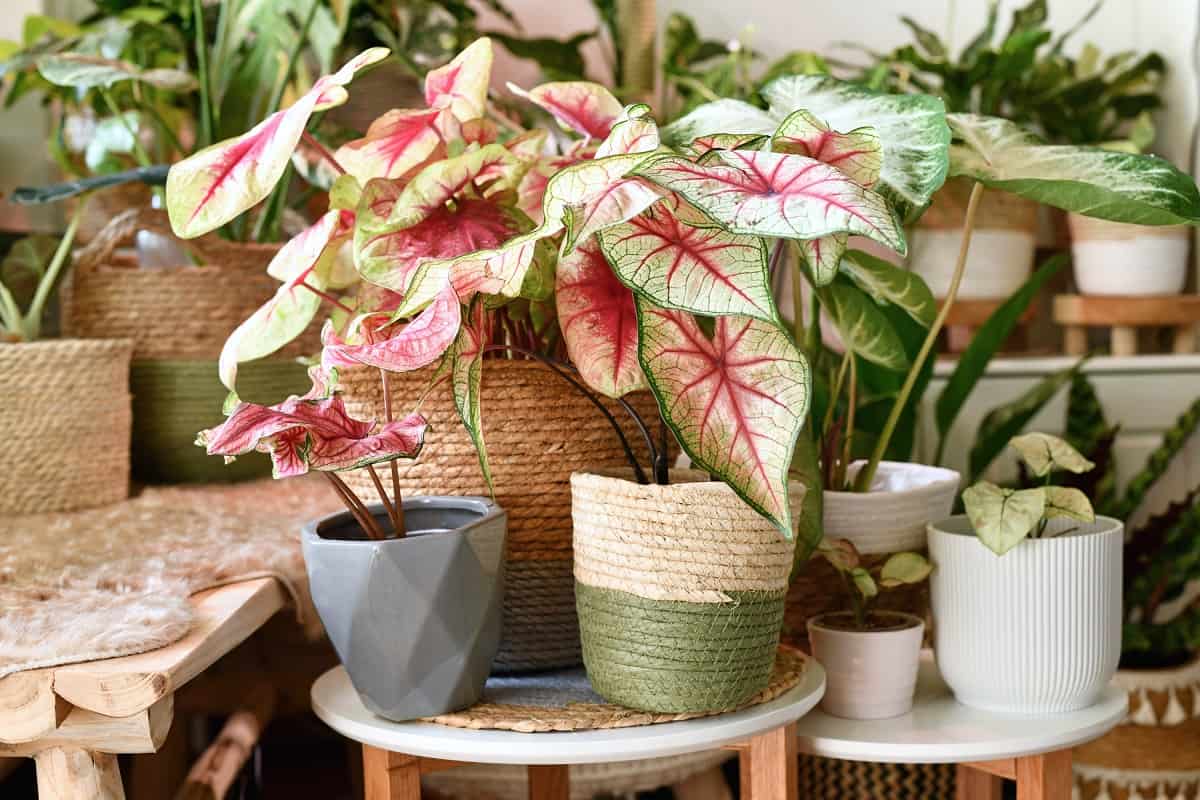
Most elephant ears need a pot that's a minimum 18 to 36 inches wide, depending on the variety. You should also note the size of the bulb to see if you need a wider or deeper pot.
Elephant ears need a lot of water, so whichever size pot you use, it should be well-draining to keep the flow of water fresh.
Growing elephant ears is an easy task when you have the right conditions set up for it. Since they come in several varieties, you have different sizes and colors to choose from!
Did you find this post helpful? If you did, check out our other articles before you go:
Are Elephant Ears Invasive? [And Where To Grow Them]
11 Best Fertilizers For Indoor Elephant Ears [ And How To Use Them]

